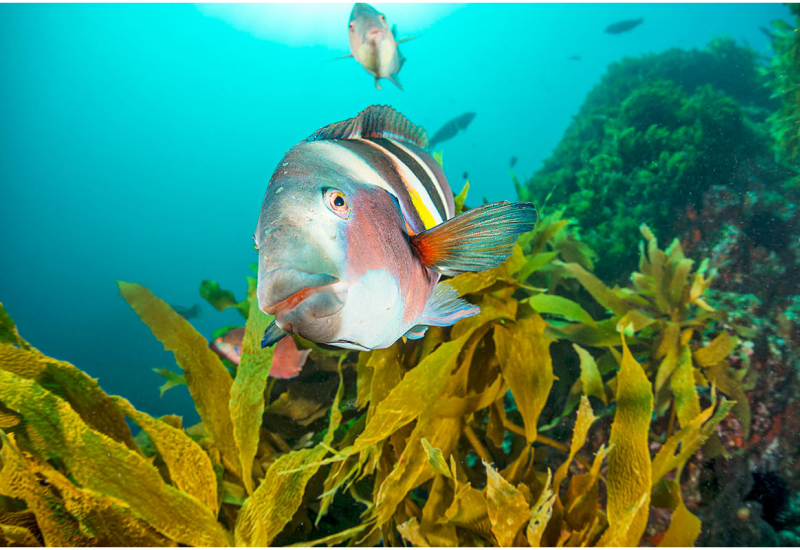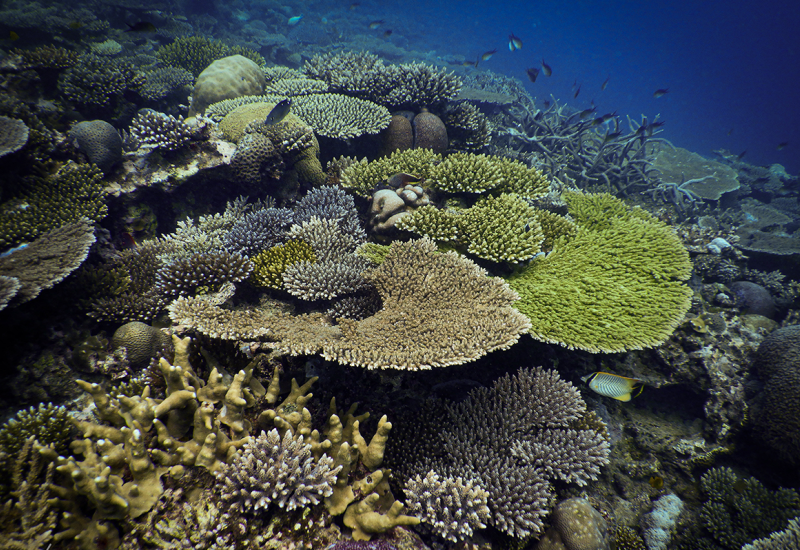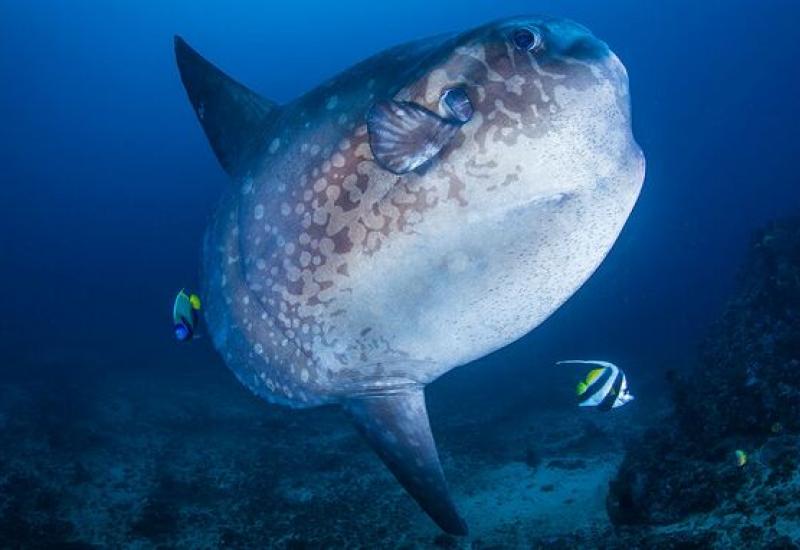Into the Wild Unknown: Papua New Guinea

By Deborah Kirk
One of the best things about a trip to Papua New Guinea is arriving. Unless you're coming from nearby Australia, you've probably spent the last 30 sleepless hours on planes and in airports. But when your plane starts its descent over Papua New Guinea's capital, Port Moresby, and you catch a glimpse of the steep-sided Owen Stanley mountains tumbling toward the lapis waters, you'll get a second wind. The view is a preview of the diving you can expect: plunging walls, lush flora and fauna, and the unique convergence of three seas, the Coral, Solomon and Bismarck. You may see, too, a few of the 150-plus islands that comprise PNG: the crescent-shaped islands of New Britain and New Ireland to the north, and the famous Trobriand islands off of the mainland. With so many distinctive places to dive, you'll have a hard time choosing. My advice: do as many as possible. And then come back for more. Here, a look at two of PNG's premier dive areas, Tufi and Kimbe Bay.
The Best of Kimbe Bay
Kimbe Bay, off the north coast of New Britain Island, has achieved dive-cult status for its staggering biodiversity (at last count, more than 900 species of fish and 400 hard corals) and knock-your-fins-off beauty. Protected by the spindly Willaumez Peninsula, the bay's nutrient-rich waters offer a unique portfolio of dive sites: towering seamounts, a chain of flourishing coral reefs, several sandy islands with nice diving in the shallows and even a well-preserved World War II airplane wreck.
It's an hour by plane from Port Moresby to Hoskins and another 45 minutes by car to the Walindi Plantation Resort, the principal dive operation in the area and a seasonal base for two live-aboards, the FeBrina and Star Dancer. The drive takes you past countless acres of orderly palm plantations, which produce the palm oil that has long been New Britain's most important industry. Palms also are to thank, in a way, for the discovery of diving in this area. In 1969, an Australian agronomist named Max Benjamin bought the Walindi palm plantation, and over the years began to dive the waters off his doorstep, more for fun than anything else. What he found was an extraordinary number of reefs and seamounts, swarming with life.
Eventually, Max shifted his focus from overseeing a palm plantation to running a dive business. Besides mapping the sites and training locals to be dive guides and boat captains, he also initiated a series of environmental and outreach programs with the aim of teaching the community about marine ecology and sustainable fishing practices. If Kimbe is a world-class dive attraction today, it's due in no small part to Max's efforts to keep it that way.
I arrive at Walindi in mid-March, near the end of the rainy season, which means, among other things: 1) that the palmy landscape surrounding Kimbe Bay is bursting with life; 2) that there's a hazy layer of cool rainwater sitting on top of the bay, which you dive through to reach the bathtub-warm salt water below; and 3) that other divers, for some obscure reason, aren't coming out in the rain, allowing me to have Keiko Yamoto, one of the most perceptive dive guides I've ever met, all to myself for my first two wet-but-glorious days.
Thankfully, the rain does nothing to diminish the diving. Vis is an excellent 70 to 80 feet, and the creatures are out in force. Since Kimbe Bay offers both deeper offshore bommies and shallower inshore reefs, Keiko and I do our first, deep dives farther out, at sites like Joel's, South Ema's and Inglis Shoals. At Joel's, we swim around the seamount's circumference at 75 to 90 feet among tight-knit swarms of pinjalo; a school of big-eye trevally hovers just beneath the surface. South Ema's has even more to see: countless sea anemones populated by resident clownfish on the crest of the bommie, sea whips and mammoth six-foot-tall barrel sponges at 50 feet, and a dramatic swim-through at 115 feet.
Keiko, who has more than 4,000 dives, some in her native Japan but most in these waters, knows exactly where to spot the sneakiest creatures: She can easily locate tiny squat lobsters hiding on crinoids and leafy scorpionfish tucked under coral ledges. At Inglis Shoals, I notice Keiko making a "Here, kitty, kitty" gesture with her hands. I swim over for a closer look. An ugly old green moray pops its head out. Keiko reaches out and touches its face, then strokes its sides like she's cuddling the family pet. It starts to purr (or whatever the equivalent behavior is for an eel). Evidently, they're old friends.
We do our second tanks at the shallower reefs, a loosely connected chain of gorgeous coral formations, all named for women (Susan, Vanessa, Kirsty Jayne, Christine) who once worked at Walindi. Each reef has its own distinct personality: Susan's Reef has a dense growth of red sea whips and giant sea fans; Vanessa's has huge elephant ear sponges; and Kirsty Jayne's is awash in lush coral gardens. Keiko and I stick to our seamount-and-reef dive plan for our first two tanks of the day, and then squeeze in a third tank when and where we can. We dive the shallows off Restorf Island, where we sight a twinspot goby and a clutch of garden eels, and visit an upright and intact Japanese Zero airplane in 50 feet of water.
Unless you're a bird-watcher, archaeologist or World War II history buff looking for unsolved mysteries in the jungle, the action at Kimbe Bay is, essentially, all under water. Out of the water, you won't find many diversions in West New Britain, but one don't-miss excursion is a trip to the Garu River. Slather on the red mud on the riverbanks and soak in the Garu's steaming hot water for a therapeutic treatment in the midst of the dense jungle.
Breathtaking Tufi
One of the jewels of Papua New Guinea, Tufi sits atop a cliff overlooking the Solomon Sea. The setting is dreamlike; from any angle, you are surrounded by a network of deep tropical fjords, gorgeous inlets separated by jungly fingers of land and harboring diverse marine life. I've come here to explore Tufi's range of dive sites-reefs, walls, wrecks and a critter-packed muck dive right at Tufi's wharf-but also to get a glimpse of the traditional culture and maybe even catch a singsing.
There are no roads to Tufi. The only way to reach this remote spot is by DeHavilland Twin Otter out of Port Moresby, and the service to Tufi's grass airstrip is only several times a week. I catch an early morning flight and take a close look at the ragtag group of passengers onboard with me. I try to figure out each one's reason for traveling to this isolated locale-Peace Corps volunteer? Village bigman? Magazine writer?-as much to get a quick snapshot of the place as a way to pass the time. Besides a few fellow divers and the inevitable missionaries, I meet three bushwalkers, rugged Aussies with walking sticks and packs, geared up for a high-endurance challenge. From Tufi, they'll trek the historic Kokoda Trail, a six- to nine-day journey through PNG's unforgiving interior.
While at Tufi, I keep hearing about the Kokoda Trail from other trekkers I meet, and I start to feel like a wuss for being only a diver. Overland PNG, with its rigorous inclines, venomous snakes and malaria risk, is for the hard-core adventurer; under water it's a comfy 84 degrees, and the reefs are serene wildernesses. Even with stinging corallimorphs and deco dives on the deeper wrecks, we divers have it easy in comparison.
I am diving Tufi's waters with Glen and Archie Kibikibi, two dreadlocked brothers who grew up in these parts. We're making most of our dives on the outer reef, where a string of coral-draped bommies comes to within 15 feet of the surface. On our first day out, we dived two of Tufi's signature sites, Mulloway and Veale's Reef, but got caught in a current that caused the vis to drop from its norm of 90 feet to a low of 40. We've come back today to try a different section of the reef, and are relieved to see sparkling clear water in all directions.
Archie likes to dive with a plastic Coke bottle, half-filled with water, which he rubs between his palms to produce a loud thrumming noise. Before we roll in, he tells me the bottle's noise will attract sharks. I am dubious. But once we are at depth at Keiko's Corner and Archie starts palming the bottle, black-tips shoot through the water in his direction. One even makes a direct run at his midsection-not in attack mode, just an inquisitive fly-by-but it misses him by less than a foot. OK, I think, looking at a genuinely stunned Archie, his eyes bugging behind his faceplate. Maybe divers aren't such wusses after all.
Back on the boat, Glen explains that he found Keiko's Corner only four weeks ago and that we're only the second group ever to dive it. He says these waters are chock-full of unexplored wrecks and reefs, and that whenever time permits, he looks for new dive sites to add to Tufi's portfolio. We decide to make our second dive an exploratory one, and it turns out to be a coral-draped wall, covered with neon-yellow Notodoris minor nudibranchs. There's a unique thrill that comes with being the first diver to see an undiscovered reef, and a beautiful one at that. And Papua New Guinea-with many uncharted depths and a relatively small dive industry-may be one of the last places in the world where such firsts are still possible.
By the time we get back, the sun is already low in the sky. It's almost time for the nightly frog chorus-a loud, clacking backbeat that fills the sultry air, PNG's after-dark soundtrack. But before it gets too late, Archie and I decide to follow up the day's magic with a night dive off Tufi's wharf, which was used as a PT boat base by the U.S. Navy in 1942 and 1943. There's a lot of debris down here-oil drums, metal sheets and other scraps-but none of it, apparently, has historical significance. While there are two diveable PT wrecks farther offshore, the metal junk we're shining our lights on now, in search of oddball critters, is pretty unexciting stuff. But the creatures that have made this debris their habitat are some of PNG's finest-we see a giant lobster tucked in a cave, two wispy lionfish clinging to the underside of the wharf, mandarinfish, multihued nudibranchs, banded pipefish and frogfish. It's a classic, critter-packed muck dive, and we scarcely need to swim more than a few yards during the entire outing to see a universe of flamboyant creatures.
Some of the country's premier wreck dives are accessible from Tufi. Just to the west of Cape Nelson is the S'Jacob, considered by many to be PNG's best shipwreck. A Dutch steamer sunk in 1943, the 325-foot-long S'Jacob sits upright in 180 feet of water and has never been salvaged. Advanced divers can still poke around the ship's original china, supplies and cargo-filled hatches. To the east are two World War II aircraft wrecks, often dived together: the B-17 bomber Blackjack, a deep dive at 150 feet; and the P-38 Lightning, in 90 feet. During my visit I heard rumors of a recently discovered Japanese submarine, possibly at a diveable depth, but it remains a closely guarded secret while it's being investigated.
Unfortunately, I never witness a singsing-the ceremonial performance in which men wear feathered headdresses and elaborate face paint-here or at any of the other villages I visit. I leave Tufi, and PNG itself, sorry not to have seen more of this thoroughly enchanted country. Heading home, I have that familiar traveler's yearning to return soon-and this time, I am certain I will.
Dive In
Dive Conditions: Average water temperatures vary from 77 degrees along the edge of the Coral Sea to 84 degrees in the Bismarck Sea.
Weather: Tropical, with coastal temperatures hovering between 77 degrees and 86 degrees. Rainfall is heavy, but varies greatly. The wet season is from December to March.
Getting There: Most divers fly into the capital of Port Moresby, arriving via connections in Australia (Cairns, Sydney or Brisbane), although you can also connect to Port Moresby through Singapore, Tokyo, New Zealand and the Philippines. Domestic flights on Air Niugini (www.airniugini.com.pg), the national carrier, are the best way to travel to outlying dive regions.
Documents: Passports are required. You can get a 60-day tourist visa (about US$30) on arrival, but it's best to obtain one in advance from the PNG Embassy at (202) 745-3680 or at www.pngembassy.org. If your itinerary includes overnight layovers in Australia, you'll also need an Australian tourist visa. It's free, but must be arranged (either on paper or electronically) in advance. For details, call the Australian Embassy at (800) 242-2878 or visit www.austemb.org.
Language: More than 800 languages are spoken in PNG, but English is the official language for business, education and government. Tok Pisin-or Pidgin-is the second language of most natives.
Time: 10 hours ahead of GMT; daylight saving time is not observed.
Currency: The kina (PGK), which fluctuates wildly. At press time, US$1 = PGK3.1. The departure tax must be paid in kinas (about PGK30), but is usually included in your airfare. Some smaller dive operations do not accept credit cards. It's possible to cash traveler's checks and exchange money, though it can be a slow process.
Electricity: 240 volts, 50 cycles, with Australian-style sockets. Many resorts and boats have 120 volts, 50 cycles, with U.S.-style sockets.
For information: For More Information on Papua New Guinea dive operators, comprehensive travel guides, special dive deals and recent trip reports submitted by users, check our TripFinder section. For more information, check out www.tufidive.com, www.walindi.com and www.loloata.com.
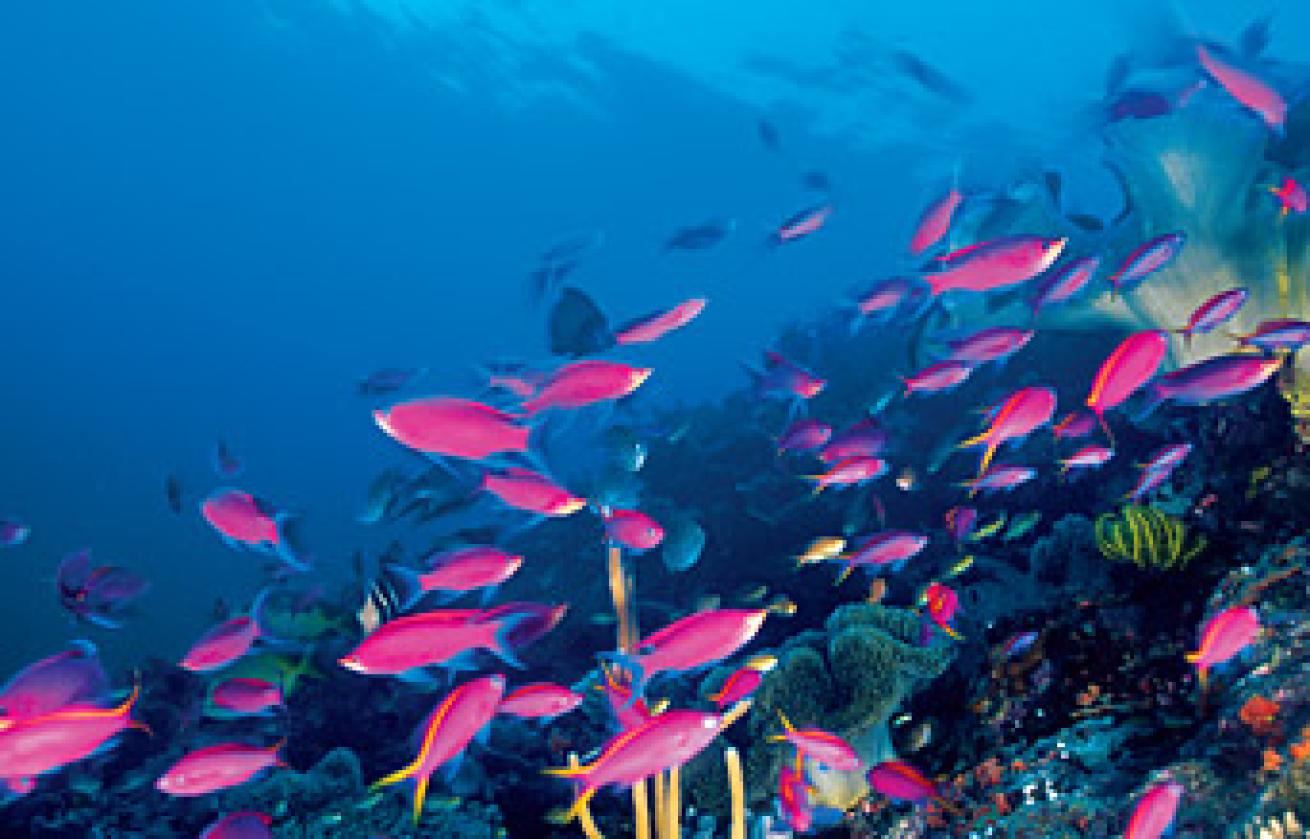
By Deborah Kirk
One of the best things about a trip to Papua New Guinea is arriving. Unless you're coming from nearby Australia, you've probably spent the last 30 sleepless hours on planes and in airports. But when your plane starts its descent over Papua New Guinea's capital, Port Moresby, and you catch a glimpse of the steep-sided Owen Stanley mountains tumbling toward the lapis waters, you'll get a second wind. The view is a preview of the diving you can expect: plunging walls, lush flora and fauna, and the unique convergence of three seas, the Coral, Solomon and Bismarck. You may see, too, a few of the 150-plus islands that comprise PNG: the crescent-shaped islands of New Britain and New Ireland to the north, and the famous Trobriand islands off of the mainland. With so many distinctive places to dive, you'll have a hard time choosing. My advice: do as many as possible. And then come back for more. Here, a look at two of PNG's premier dive areas, Tufi and Kimbe Bay.
The Best of Kimbe Bay
Kimbe Bay, off the north coast of New Britain Island, has achieved dive-cult status for its staggering biodiversity (at last count, more than 900 species of fish and 400 hard corals) and knock-your-fins-off beauty. Protected by the spindly Willaumez Peninsula, the bay's nutrient-rich waters offer a unique portfolio of dive sites: towering seamounts, a chain of flourishing coral reefs, several sandy islands with nice diving in the shallows and even a well-preserved World War II airplane wreck.
It's an hour by plane from Port Moresby to Hoskins and another 45 minutes by car to the Walindi Plantation Resort, the principal dive operation in the area and a seasonal base for two live-aboards, the FeBrina and Star Dancer. The drive takes you past countless acres of orderly palm plantations, which produce the palm oil that has long been New Britain's most important industry. Palms also are to thank, in a way, for the discovery of diving in this area. In 1969, an Australian agronomist named Max Benjamin bought the Walindi palm plantation, and over the years began to dive the waters off his doorstep, more for fun than anything else. What he found was an extraordinary number of reefs and seamounts, swarming with life.
Eventually, Max shifted his focus from overseeing a palm plantation to running a dive business. Besides mapping the sites and training locals to be dive guides and boat captains, he also initiated a series of environmental and outreach programs with the aim of teaching the community about marine ecology and sustainable fishing practices. If Kimbe is a world-class dive attraction today, it's due in no small part to Max's efforts to keep it that way.
I arrive at Walindi in mid-March, near the end of the rainy season, which means, among other things: 1) that the palmy landscape surrounding Kimbe Bay is bursting with life; 2) that there's a hazy layer of cool rainwater sitting on top of the bay, which you dive through to reach the bathtub-warm salt water below; and 3) that other divers, for some obscure reason, aren't coming out in the rain, allowing me to have Keiko Yamoto, one of the most perceptive dive guides I've ever met, all to myself for my first two wet-but-glorious days.
Thankfully, the rain does nothing to diminish the diving. Vis is an excellent 70 to 80 feet, and the creatures are out in force. Since Kimbe Bay offers both deeper offshore bommies and shallower inshore reefs, Keiko and I do our first, deep dives farther out, at sites like Joel's, South Ema's and Inglis Shoals. At Joel's, we swim around the seamount's circumference at 75 to 90 feet among tight-knit swarms of pinjalo; a school of big-eye trevally hovers just beneath the surface. South Ema's has even more to see: countless sea anemones populated by resident clownfish on the crest of the bommie, sea whips and mammoth six-foot-tall barrel sponges at 50 feet, and a dramatic swim-through at 115 feet.
Keiko, who has more than 4,000 dives, some in her native Japan but most in these waters, knows exactly where to spot the sneakiest creatures: She can easily locate tiny squat lobsters hiding on crinoids and leafy scorpionfish tucked under coral ledges. At Inglis Shoals, I notice Keiko making a "Here, kitty, kitty" gesture with her hands. I swim over for a closer look. An ugly old green moray pops its head out. Keiko reaches out and touches its face, then strokes its sides like she's cuddling the family pet. It starts to purr (or whatever the equivalent behavior is for an eel). Evidently, they're old friends.
We do our second tanks at the shallower reefs, a loosely connected chain of gorgeous coral formations, all named for women (Susan, Vanessa, Kirsty Jayne, Christine) who once worked at Walindi. Each reef has its own distinct personality: Susan's Reef has a dense growth of red sea whips and giant sea fans; Vanessa's has huge elephant ear sponges; and Kirsty Jayne's is awash in lush coral gardens. Keiko and I stick to our seamount-and-reef dive plan for our first two tanks of the day, and then squeeze in a third tank when and where we can. We dive the shallows off Restorf Island, where we sight a twinspot goby and a clutch of garden eels, and visit an upright and intact Japanese Zero airplane in 50 feet of water.
Unless you're a bird-watcher, archaeologist or World War II history buff looking for unsolved mysteries in the jungle, the action at Kimbe Bay is, essentially, all under water. Out of the water, you won't find many diversions in West New Britain, but one don't-miss excursion is a trip to the Garu River. Slather on the red mud on the riverbanks and soak in the Garu's steaming hot water for a therapeutic treatment in the midst of the dense jungle.
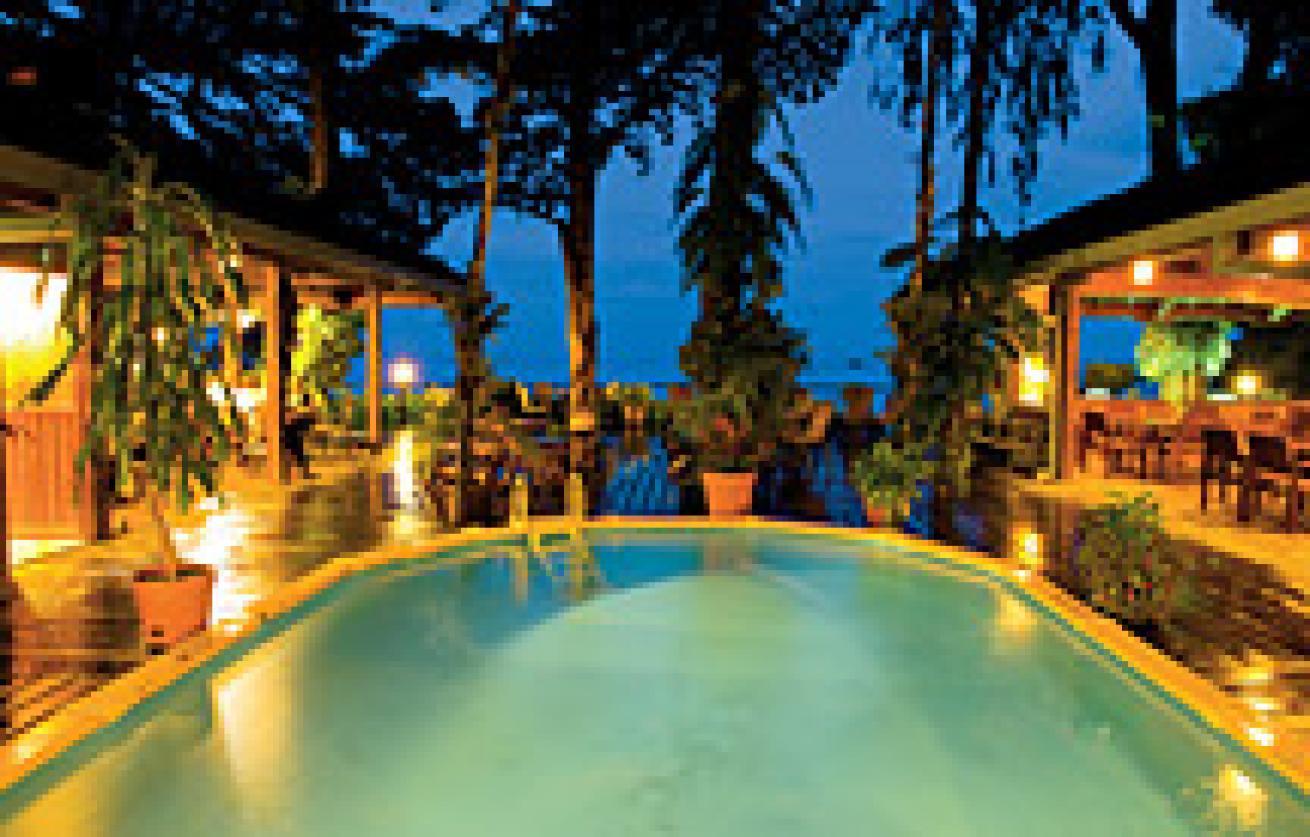
Breathtaking Tufi
One of the jewels of Papua New Guinea, Tufi sits atop a cliff overlooking the Solomon Sea. The setting is dreamlike; from any angle, you are surrounded by a network of deep tropical fjords, gorgeous inlets separated by jungly fingers of land and harboring diverse marine life. I've come here to explore Tufi's range of dive sites-reefs, walls, wrecks and a critter-packed muck dive right at Tufi's wharf-but also to get a glimpse of the traditional culture and maybe even catch a singsing.
There are no roads to Tufi. The only way to reach this remote spot is by DeHavilland Twin Otter out of Port Moresby, and the service to Tufi's grass airstrip is only several times a week. I catch an early morning flight and take a close look at the ragtag group of passengers onboard with me. I try to figure out each one's reason for traveling to this isolated locale-Peace Corps volunteer? Village bigman? Magazine writer?-as much to get a quick snapshot of the place as a way to pass the time. Besides a few fellow divers and the inevitable missionaries, I meet three bushwalkers, rugged Aussies with walking sticks and packs, geared up for a high-endurance challenge. From Tufi, they'll trek the historic Kokoda Trail, a six- to nine-day journey through PNG's unforgiving interior.
While at Tufi, I keep hearing about the Kokoda Trail from other trekkers I meet, and I start to feel like a wuss for being only a diver. Overland PNG, with its rigorous inclines, venomous snakes and malaria risk, is for the hard-core adventurer; under water it's a comfy 84 degrees, and the reefs are serene wildernesses. Even with stinging corallimorphs and deco dives on the deeper wrecks, we divers have it easy in comparison.
I am diving Tufi's waters with Glen and Archie Kibikibi, two dreadlocked brothers who grew up in these parts. We're making most of our dives on the outer reef, where a string of coral-draped bommies comes to within 15 feet of the surface. On our first day out, we dived two of Tufi's signature sites, Mulloway and Veale's Reef, but got caught in a current that caused the vis to drop from its norm of 90 feet to a low of 40. We've come back today to try a different section of the reef, and are relieved to see sparkling clear water in all directions.
Archie likes to dive with a plastic Coke bottle, half-filled with water, which he rubs between his palms to produce a loud thrumming noise. Before we roll in, he tells me the bottle's noise will attract sharks. I am dubious. But once we are at depth at Keiko's Corner and Archie starts palming the bottle, black-tips shoot through the water in his direction. One even makes a direct run at his midsection-not in attack mode, just an inquisitive fly-by-but it misses him by less than a foot. OK, I think, looking at a genuinely stunned Archie, his eyes bugging behind his faceplate. Maybe divers aren't such wusses after all.
Back on the boat, Glen explains that he found Keiko's Corner only four weeks ago and that we're only the second group ever to dive it. He says these waters are chock-full of unexplored wrecks and reefs, and that whenever time permits, he looks for new dive sites to add to Tufi's portfolio. We decide to make our second dive an exploratory one, and it turns out to be a coral-draped wall, covered with neon-yellow Notodoris minor nudibranchs. There's a unique thrill that comes with being the first diver to see an undiscovered reef, and a beautiful one at that. And Papua New Guinea-with many uncharted depths and a relatively small dive industry-may be one of the last places in the world where such firsts are still possible.
By the time we get back, the sun is already low in the sky. It's almost time for the nightly frog chorus-a loud, clacking backbeat that fills the sultry air, PNG's after-dark soundtrack. But before it gets too late, Archie and I decide to follow up the day's magic with a night dive off Tufi's wharf, which was used as a PT boat base by the U.S. Navy in 1942 and 1943. There's a lot of debris down here-oil drums, metal sheets and other scraps-but none of it, apparently, has historical significance. While there are two diveable PT wrecks farther offshore, the metal junk we're shining our lights on now, in search of oddball critters, is pretty unexciting stuff. But the creatures that have made this debris their habitat are some of PNG's finest-we see a giant lobster tucked in a cave, two wispy lionfish clinging to the underside of the wharf, mandarinfish, multihued nudibranchs, banded pipefish and frogfish. It's a classic, critter-packed muck dive, and we scarcely need to swim more than a few yards during the entire outing to see a universe of flamboyant creatures.
Some of the country's premier wreck dives are accessible from Tufi. Just to the west of Cape Nelson is the S'Jacob, considered by many to be PNG's best shipwreck. A Dutch steamer sunk in 1943, the 325-foot-long S'Jacob sits upright in 180 feet of water and has never been salvaged. Advanced divers can still poke around the ship's original china, supplies and cargo-filled hatches. To the east are two World War II aircraft wrecks, often dived together: the B-17 bomber Blackjack, a deep dive at 150 feet; and the P-38 Lightning, in 90 feet. During my visit I heard rumors of a recently discovered Japanese submarine, possibly at a diveable depth, but it remains a closely guarded secret while it's being investigated.
Unfortunately, I never witness a singsing-the ceremonial performance in which men wear feathered headdresses and elaborate face paint-here or at any of the other villages I visit. I leave Tufi, and PNG itself, sorry not to have seen more of this thoroughly enchanted country. Heading home, I have that familiar traveler's yearning to return soon-and this time, I am certain I will.
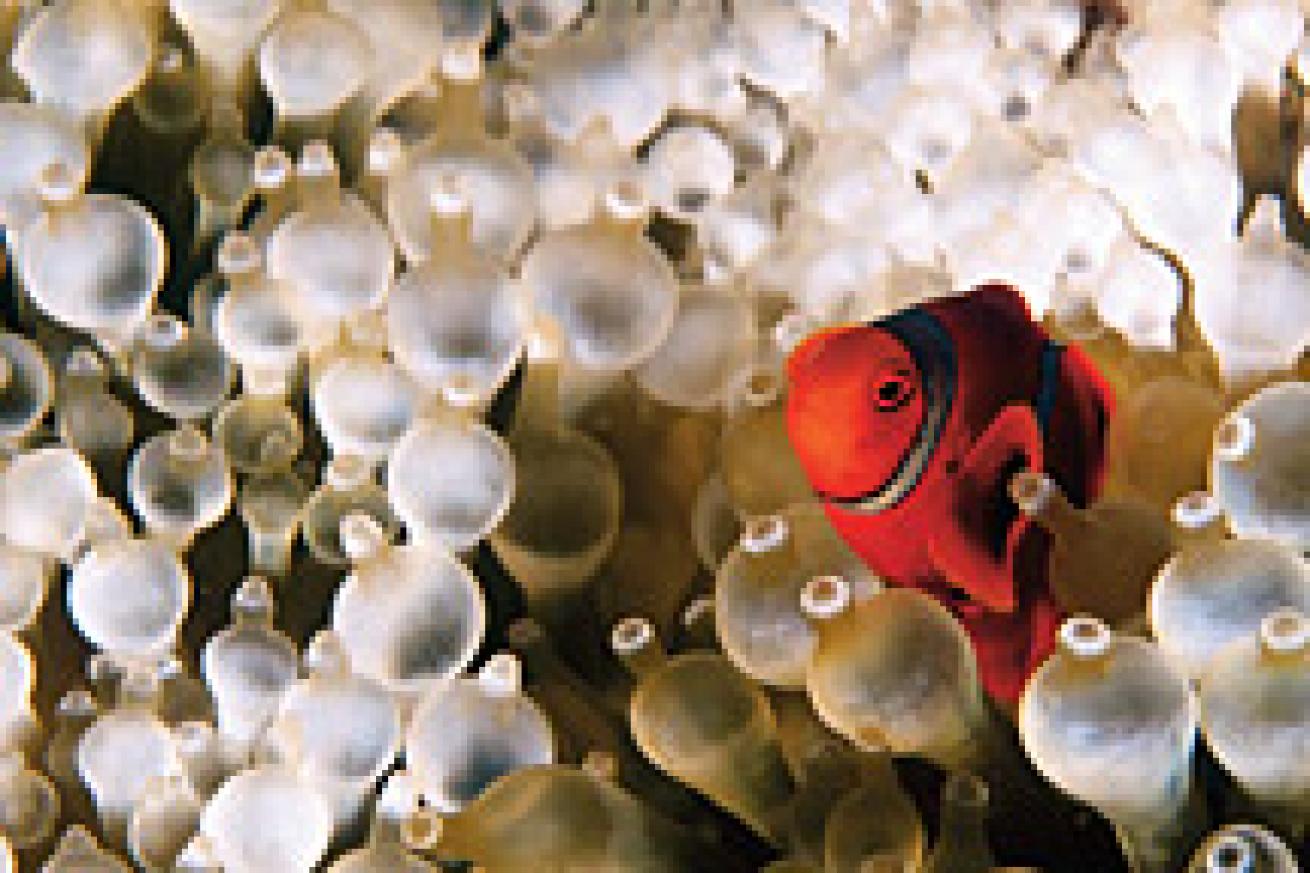
Dive In
Dive Conditions: Average water temperatures vary from 77 degrees along the edge of the Coral Sea to 84 degrees in the Bismarck Sea.
Weather: Tropical, with coastal temperatures hovering between 77 degrees and 86 degrees. Rainfall is heavy, but varies greatly. The wet season is from December to March.
Getting There: Most divers fly into the capital of Port Moresby, arriving via connections in Australia (Cairns, Sydney or Brisbane), although you can also connect to Port Moresby through Singapore, Tokyo, New Zealand and the Philippines. Domestic flights on Air Niugini (www.airniugini.com.pg), the national carrier, are the best way to travel to outlying dive regions.
Documents: Passports are required. You can get a 60-day tourist visa (about US$30) on arrival, but it's best to obtain one in advance from the PNG Embassy at (202) 745-3680 or at www.pngembassy.org. If your itinerary includes overnight layovers in Australia, you'll also need an Australian tourist visa. It's free, but must be arranged (either on paper or electronically) in advance. For details, call the Australian Embassy at (800) 242-2878 or visit www.austemb.org.
Language: More than 800 languages are spoken in PNG, but English is the official language for business, education and government. Tok Pisin-or Pidgin-is the second language of most natives.
Time: 10 hours ahead of GMT; daylight saving time is not observed.
Currency: The kina (PGK), which fluctuates wildly. At press time, US$1 = PGK3.1. The departure tax must be paid in kinas (about PGK30), but is usually included in your airfare. Some smaller dive operations do not accept credit cards. It's possible to cash traveler's checks and exchange money, though it can be a slow process.
Electricity: 240 volts, 50 cycles, with Australian-style sockets. Many resorts and boats have 120 volts, 50 cycles, with U.S.-style sockets.
For information: For More Information on Papua New Guinea dive operators, comprehensive travel guides, special dive deals and recent trip reports submitted by users, check our TripFinder section. For more information, check out www.tufidive.com, www.walindi.com and www.loloata.com.


